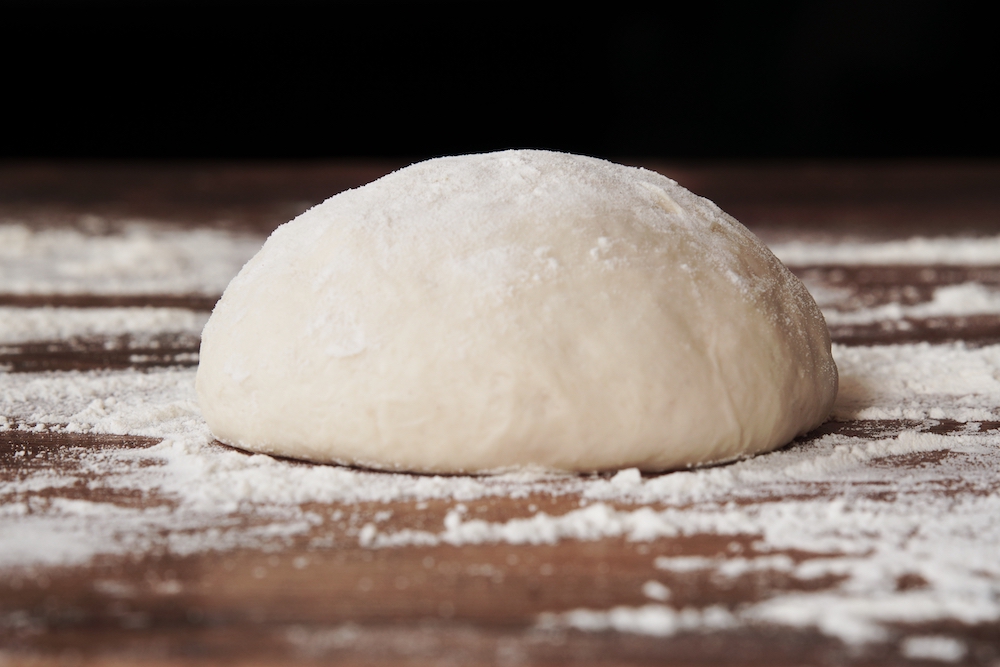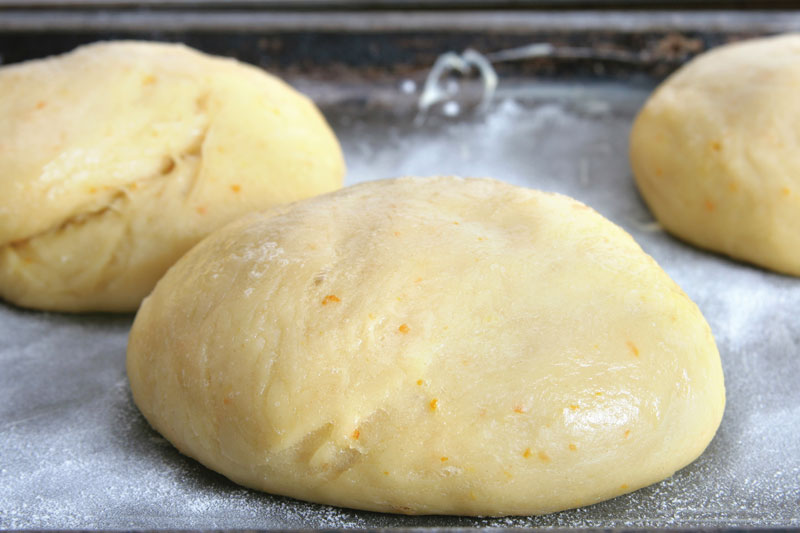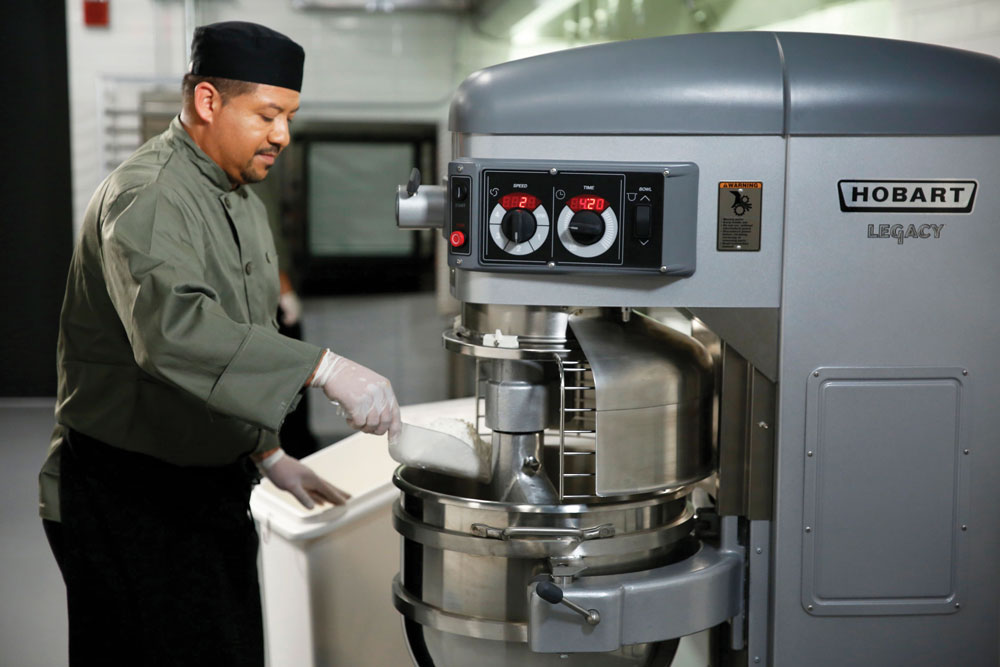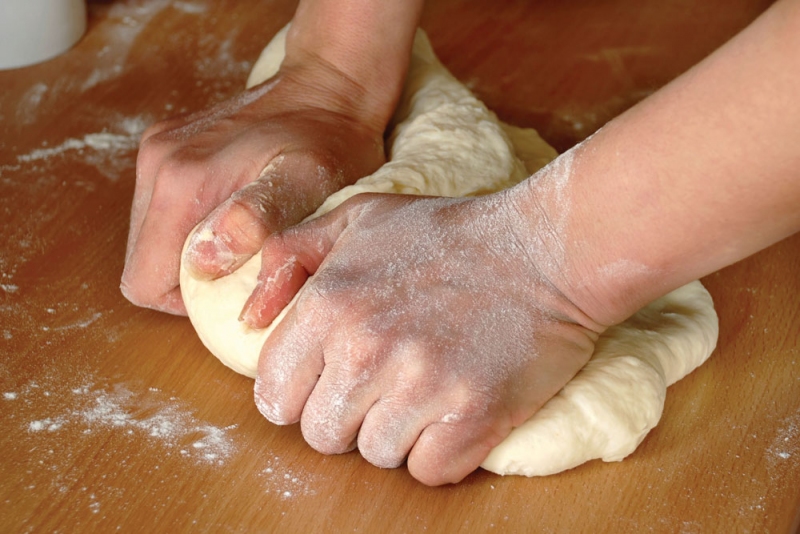In the last issue I said that I would explain more of the advantages to expressing our pizza dough formulas in Baker's Percent. Previously, I explained how to convert a formula from Baker's Percent to a working formula in weight measures, and also how to express ingredient weights as Baker's Percent. For a refresher, go to the Manager's Toolbox at www.pmq.com and you can find these conversion articles there. This time I'll show you how to use Baker's Percent to calculate the amount of dough that might be needed to fill an order, and an easy way to calculate the amount of dough that can be made from any amount of flour.
Once you have your formula shown in Baker's Percent, if you add up the total of all the percentages you will arrive at the total formula percent. For example, flour 100 percent; salt 1.75 percent; olive oil 3 percent; compressed yeast 1.5 percent; water 58 percent. The total formula percent is 164.25 percent. Now, drop the word 'percent' and move the decimal point two places to the left. This will give you 1.6425. To find the yield of this formula, all you need to know is the flour weight that is being used. If you wish to use 50 pounds of flour instead of 40 pounds, this is how you would find your new batch (dough) weight (1.6425 X 50 = 82.125 pounds is the dough weight that you would get if you used 50 pounds of flour in this formula).
Another way to use total formula percent is in determining the amount of flour that would be needed to make an order. Let's say that next month we will run a promotion on our large size deep dish pizzas. We anticipate that we will sell something in the neighborhood of 1,500 of these pizzas during the two-day promotion.
The question that you are asking yourself is, "How much flour and other ingredients will I need on hand to make sure I have enough for all of these pizzas?" You know that each pizza will require an 18 ounce dough ball for the crust, and that you will need to have 1,500 of these dough balls on hand. To find the amount of dough needed, first express your dough ball weight in pounds (18 divided by 16 = 1.125 pounds), then multiply by the number of dough balls needed (1500 X 1.125 pounds = 1,687.5 pounds of dough that will be needed to make the required number of dough balls).
Your next question might be, "How many batches of dough will I have to make?" Divide the total pounds of dough needed by 1.6425 (1,687.5 divided by 1.6425 = 1,027.39 pounds of flour will be needed). Round this up to the nearest full pound (= 1,028 pounds). To find the number of dough batches that you will have to make divide 1,028 by the weight of flour in each of your doughs, in this case 50 pounds (1,028 pounds of flour divided by 50 = 20.56 batches of dough will need to be made). You can round this to either 20.5 or take it up to 21 batches.
Going back to the total flour weight needed (1,028 pounds), if you now multiply that by the percent of each ingredient, you will know how much of each ingredient you will also need to make all of that dough. This comes in handy when ordering ingredients as it allows you to project ingredient requirements in advance of any special promotions or activities.
One other place where these calculations can come in handy is when making an assessment of the ingredients on hand in the store. Let's say you have 2,300 pounds of flour in your inventory. If all of the flour is used for making pizza, all that you will have to do is multiply the flour weight (2,300 pounds in this case) by the percent of each ingredient in your dough formula. Compare this weight against the amount of that ingredient that you have in inventory and you will know if you should be ordering more of that ingredient soon.
When I'm making pizzas, I usually make both thin and thick crust varieties from the same dough formula. I just change the dough weight as needed for each type and size of pizza. I like to work with a fixed inventory dough management system. This means that I've always got the same number of dough balls available for use every day of the week. At the end of each day I will produce enough dough to replace the dough balls that were used that day, bringing my inventory back to the specified level. I can use some simple calculations to determine how much dough I will need to make each night to rebuild my depleted inventory of dough balls. Here's how it works. Suppose my fixed inventory is (150) 18-ounce dough balls; (300) 12-ounce dough balls, and (200) 9-ounce dough balls. My use for the day was (72) 18-ounce dough balls; (250) 12-ounce dough balls; and (130) 9-ounce dough balls. First, I will need to determine the total weight of dough needed to replenish my inventory (72 X 18 ounces) + (250 X 12 ounces) + (130 X 9 ounces) = 5466 ounces or 341.625 pounds. If one batch of dough weighs 164.25 pounds, all I will need to do is to divide 341.625 pounds by 164.25 and I will come up with the number of batches of dough needed (341.625 divided by 164.25 = 2.08 batches). Round this off to two batches, I don't think anybody will miss the 13 ounces of dough in this case.
These calculations may seem confusing at first, but with a little practice they will become an everyday exercise that can make your store operation just a little bit easier, and less confusing.












